The Three Minute Thesis (3MT) celebrates the exciting research conducted by Doctor of Philosophy (PhD) and Professional Doctorate (Research) candidates. It is an international academic competition developed by the University of Queensland to cultivate students’ academic, presentation, and research communication skills.
3 Minute Thesis 2023
2023 UTS 3MT Winners
This year's 3MT finals continued with an in-person event plus an online session available to audiences via Zoom. Topics ranged from conflict studies to ovarian cancer and the stock market, deep diving into palliative care in prisons, preeclampsia, osteoporosis, planned obsolescence and music practice. Our judges had the difficult decision of choosing the winner and runner-up award, while our in-person and online audience were busy voting for their People's Choice.
A very special thank you to Aaron Ngan and Stephanie Weiss from UTS startups for all their support of our finalists that included workshops and one on one sessions.
Our 2023 judging panel featured:
- Professor Hélène de Burgh-Woodman, Dean of the Graduate Research School
- Megan Taylor, PhD Candidate in the Faculty of Design, Architecture and Building; 2022 UTS 3MT winner
- Drew Smith, Managing Director, StudioPhro, UTS graduate of the Faculty of Design, Architecture and Building in 2004
The 2023 prizes were awarded to:
- Pattarasiri Rangsrikitphoti
School of Biomedical Engineering, Faculty of Engineering and Information Technology
Presentation: "The role of progesterone receptor on chemotherapy response in ovarian cancer"
First prize: $3000 and representing UTS at the 2023 Asia-Pacific 3MT competition - Isabelle Schaefer
IMPACCT, Faculty of Health
Presentation: "Palliative Care in NSW Prisons: the pressing need for compassionate care".
Runner-up: $1000 - Claire Richards
School of Life Sciences, Faculty of Science
Presentation: "Printing a cure for preeclampsia"
People's Choice: $1000
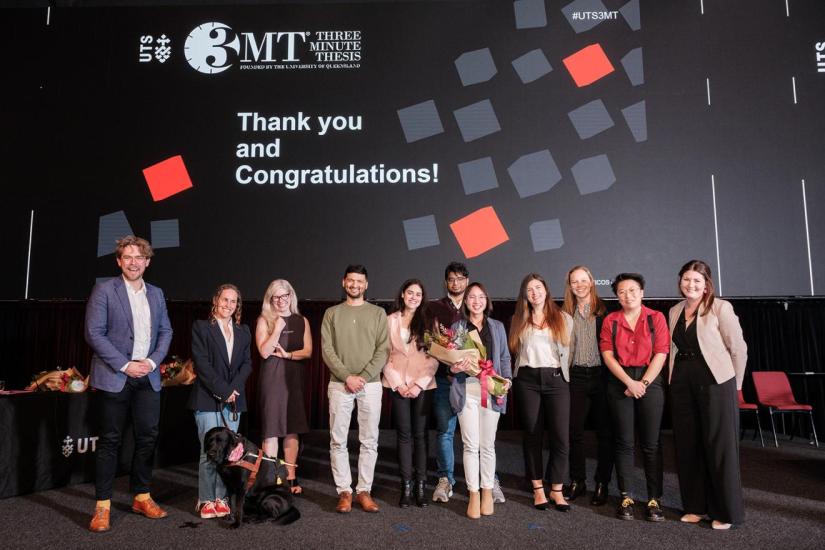
From Left to Right: Drew Smith (judge), Megan Taylor with Lady (judge), Professor Helene de Burgh-Woodman (judge), Prakash Paudel (ISF), Monica Rouvellas (FASS), Atiqur Rahman Rasel (Business), Pattarasiri Rangsrikitphoti (Winner, FEIT), Law finalist, Isabelle Schaefer (Runner-up, Health), Krisel De Dios (FEIT), Claire Richards (People's Choice, Science)
2023 Faculty Finalists
Overall winner: Pattarasiri Rangsrikitphoti, Faculty of Engineering and Information Technology

Ovarian cancer is the deadliest of all female cancer In Australia.
Over 2000 women in Australia are diagnosed with ovarian cancer every year. 50% of them die from this disease. Why?
There are no clear signs for ovarian cancer -- Fatigue, back pain and stomachache. We as women who might be your mom, your sister, your partner have experienced these in our everyday life.
That’s why over 70% of patients are diagnosed at very late stage when treatments become limited.
The mainstay treatment is chemotherapy.
As you may know, chemotherapy can be a burden with painful side effects-- infection, depression, nausea, and hair loss. The worst thing is many patients don’t even benefit from it. They have very poor survival outcome.
But what if I told you that we could predict treatment outcomes before starting chemotherapy to precisely give the best treatment option to each patient.
Progesterone Receptors or PR for short can be one of the important predictors for a chemotherapy success. The question is why?......
That is what I am asking in my research. Why is PR a good ? What is the role of PR in ovarian cancer treatment?
PR is like a little antenna that can send signals within our cells to communicate and carry out important functions for reproductive process-- menstruation, pregnancy, and sexual development.
But the less well-known fact is having PR in ovarian cancer is linked to a better chemotherapy response, and increased patient survival.
By putting PR back to ovarian cancer cells, we can detect a decrease ovarian cancer growth in response to chemotherapy, which means PR can make cancer cells more responsive and more sensitive to chemotherapy.
My finding will provide a better understanding of the link between PR and chemotherapy outcomes in ovarian cancer. This would ultimately unlock the power of progesterone receptor for better prediction and a more precise treatment and most importantly hope for a much better quality of life of patients… and … their loved ones.
Thank you.

My name is Pattarasiri, but most people call Eve. I am currently in the final year of my PhD at the School of Biomedical Engineering. I am enrolled in a dual doctorate degree program, which is an exciting collaboration between Chulalongkorn University in Thailand and the University of Technology Sydney. My research primarily explores the impact of the progesterone receptor on chemotherapy responses in ovarian cancer.
Runner-up: Isabelle Schaefer, Faculty of Health
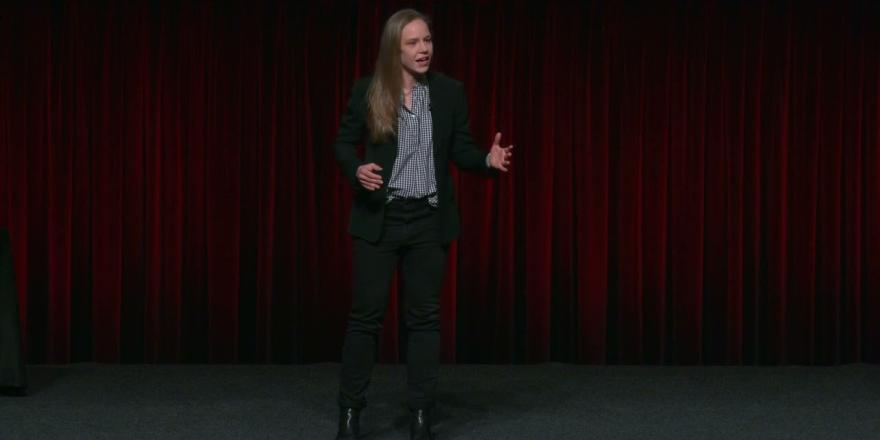
Imagine that you’re lying in bed. The pain in your chest is bad tonight. It burns with each breath you take, but your breaths are desperate and rapid because you can’t seem to get enough oxygen. The doctors said the cancer was spreading. You can’t even go to the toilet on your own, you need another inmate to help.
You could press the call button, but it will take half an hour for the medical staff to get to you behind the locked doors, and anyway, all they can do is give you paracetamol. You’re dying, alone in your cell, away from your family. You try to turn over, to get more comfortable. Your hand jerks to a halt. You forgot you were handcuffed to the bed.
Dying in prison is a hidden problem, but a growing one. The number of older people in prison is growing faster than any other age group, and they're in much poorer health than people in the community.
In my PhD research as part of a national Commonwealth funded project, I have been investigating how we can best manage people in prison who need palliative care, focusing on NSW prisons and the more than 3000 older people imprisoned here. To improve prison palliative care, we need to understand how people are cared for now, and the major issues they face accessing basic end of life care.
To answer these questions, I've:
Used palliative care patients’ medical records to look at how care is currently being provided.
Interviewed stakeholders like clinicians and correctional officers to understand their experiences of providing care.
And examined the organisational policies that drive this system.
And let me tell you, it has been eye opening.
So far, I’ve heard stories of:
Patients who are literally unable to eat the only food they’re given because appropriate foods like pureed diets just aren’t available.
Patients who can’t take their medication because they aren’t allowed to keep the plastic measuring devices in their cells.
Patients who were unable to receive their last-line chemotherapy, because people in prison aren’t eligible for Medicare, and there’s no way to pay for the medication.
How would you feel if that was you?
At this point in my research, there are clear themes already emerging.
Firstly, patients don’t receive equal palliative care to people in the community, and they have almost no choice about their end of life care.
Secondly, the NSW correctional system is so opaque and resistant to change, that it’s extremely difficult to make any sort of development.
And lastly, building meaningful collaboration between correctional healthcare providers and correctional services personnel is the foundation for success in meeting patients’ needs at the end of life.
My research has contributed to a world-first national project, working together with every correctional healthcare and custodial organisation in Australia, researchers, educators, and palliative care experts to map out a strategy, the National Framework for Provision of Palliative Care in Australian Prisons, to ensure that people in prison can die with dignity.
Because, at the end of the day, everyone deserves that. Right?

Isabelle Schaefer is a Project Officer at the University of Technology Sydney working in palliative care research, with a background in medical science and infectious diseases. She is undertaking a Doctor of Philosophy as part of the National Palliative Care in Prisons project, focusing on a gap analysis of palliative care provision in Long Bay Correctional Complex.
People's Choice Winner: Claire Richards, Faculty of Science
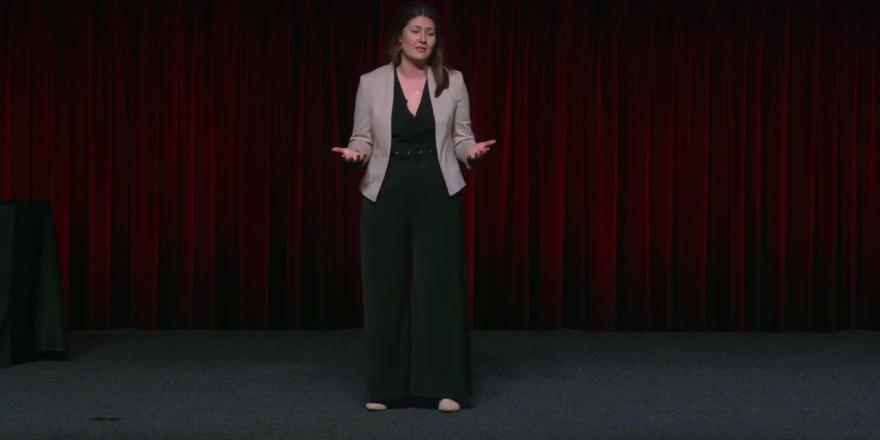
Video transcript for 3MT Finalist: Claire Richards
Babe, we’re pregnant!
Well, not me, but my cell cultures are.
It started when I was introduced to the placenta cells in the lab, and we hit it off. But I could tell they weren’t completely comfortable. Like most researchers, we’d been growing them on a hard, plastic surface. Think: bed without a mattress.
But I’d seen other scientists were rehoming their cells in this squishy, jelly environment and they were living their best life! They made copies of themselves, building families where everyone communicated and had a job to do. So, I rehomed my placenta cells and they LOVED the tree change! They started making their own families, and I quickly ended up with lovely little mini-placentas.
Now you might be wondering why I would bother trying to generate a mini placenta, the organ that you’re separated from at birth. Well, I’m really interested in the important role of the placenta during pregnancy, helping to exchange delicious nutrients and gases between mum and baby. More specifically, I’m interested to know why it stops working properly in preeclampsia. Preeclampsia is a serious cardiovascular disorder that affects up to 1 in 12 pregnancies. The effects of preeclampsia can be severe and long-lasting and can result in death, killing up to half a million babies and 70,000 women each year around the world.
Currently, the only cure is to take out the faulty placenta which often means delivering the baby prematurely when they’re not fully developed.
So why are women and babies still dying from pregnancy?
Well, human pregnancy is a very sensitive process that would be put at risk by taking samples to study that hidden world. This makes pregnancy difficult to study and for understanding how complications such as preeclampsia develop and how we can treat them. This is what led me to use a 3D bioprinter to create a model of the placenta that we can study in a dish. We’re all familiar with your standard office printer, right? Pop the ink cartridge in, select the paper size you want and off you go. Hoping it doesn’t jam. Well in this case, the bioprinter deposits or ‘prints’ placental cells within the soft gel that mimics the feel and environment of the tissue they come from. Once they’re happy, they form 3-dimensional structures made of lots of cells and they start to become the various cell types that you would find in the placenta. I’ve watched them travel around the dish over time, adventuring like they would do when searching for a blood supply in the uterus. They even make and release a hormone, so they come up positive in a pregnancy test. This model will help us study parts of pregnancy that have not been understood.
It’s time to print a cure for preeclampsia.

Claire Richards is a final year PhD student in the Faculty of Science. Claire completed a Bachelor of Biomedical Science (UoN) prior to an Honours research project at UTS under the supervision of A/Prof Lana McClements. Claire has a passion for women's health and has been investigating a complication of pregnancy known as preeclampsia. In her PhD, she has been developing models of the placenta that researchers can use to understand unknown aspects of pregnancy and the development of preeclampsia. Claire has embraced new technologies such as bioprinting, printing with living samples, to create these cell models and test potential treatments of preeclampsia. Claire has also enjoyed using advanced microscopes at the Microbial Imaging Facility (MIF, UTS) to view her samples and the union between art and science.
Monica Rouvellas, Faculty of Arts and Social Sciences
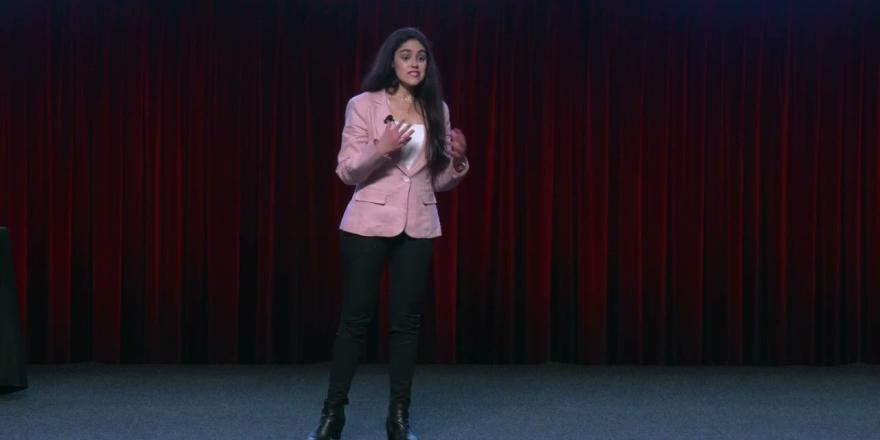
Who here has ever learned a musical instrument? How many of you gave it up when the going got tough? How many of you persisted through with blood, sweat, and tears along the way?
Why is it that some students get frustrated, giving up learning a musical instrument within their first few years of playing, whilst others continue past high school? It was this very question that started me down my research journey looking into the role feedback played on a student’s motivation to learn a musical instrument and the all-important question of whether technology can assist students in overcoming the common barriers to music practice.
An initial survey of 360 Australian music teachers revealed significant barriers to effective music practice, notably lack of time, lack of family support, and ineffective practice strategies. These obstacles closely relate to self-regulation in music education. I conducted subsequent interviews with these teachers digging deeper into how teachers gave feedback during music lessons and whether the types of feedback they gave helped students regulate their music learning. These eye-opening conversations unveiled a common trend: while many emphasised the importance of consistent practice, most neglected to provide tailored 'how-to-practice' guidance aligned with students' ages and musical abilities. This was mainly due to these teachers’ lack of formal pedagogical training on how to give effective feedback.
Whilst this deficiency of systematic feedback poses minimal concern for the inquisitive learning stage, it becomes critical at the pivotal “make-or-break” stage of learning an instrument, around AMEB Grade 3 to grade 5. Instead of corrective feedback, what students really need at this stage is detailed guidance on applying diverse practice strategies to overcome the typical home practice challenges. This guidance fosters self-reflective learning, propelling these students towards self-fulfilment and instrument mastery.
This is a challenging problem to solve, one where I believe technology can assist. I’m not suggesting a chat GPT for music learning but rather an interactive music learning application that can be tailored to the student’s age and musical ability, so that they don’t quit when the going gets tough. My research will provide a blueprint for such an application by integrating the findings of my research with the pros and cons of existing music learning applications to develop a series of features to deliver richer and more effective feedback in home practice. By addressing these issues with music practice through technology, I hope to help the millions of music students become motivated learners and develop an ongoing love of learning music.

Monica Rouvellas is an entrepreneur and a multi-disciplinary academic, researcher and educator. Monica holds a Juris Doctor (UNSW), a MBA (UTS), and a Bachelor of Music (1st Class Honours)(USyd). She is currently completing a Doctor of Philosophy (PhD) at the University Technology, Sydney, researching technological interventions to assist motivation and development of self-regulated learning in music practice. Monica is currently on Faculty as both lecturer and tutor at the Macquarie Business School, the Macquarie Law School, the University of Sydney Business School and the University of Technology Sydney.
Atiqur Rahman Rasel, UTS Business School
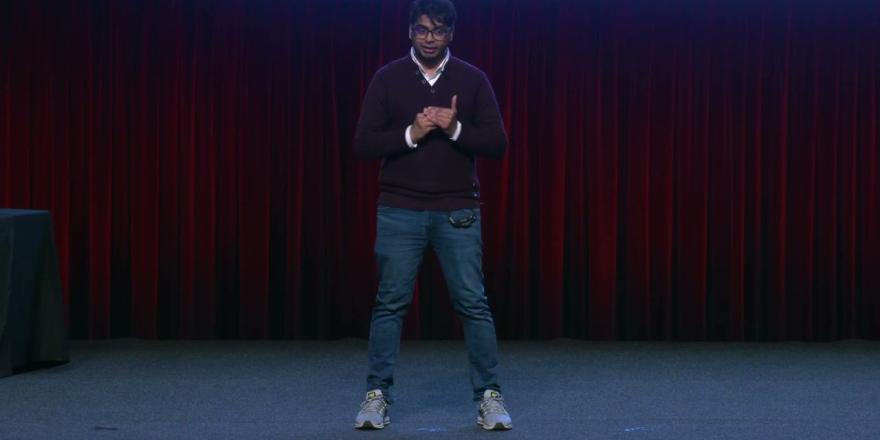
How many of you have been to a doctor and got a handwritten prescription?
How many of you actually looked at the prescription and went “ uhm I don’t understand it”?
Now, what this has to got with my study?
In Australia, if you are a large shareholder, then you are an important person to the authority and every time you buy or sell something in the stock market, you have to report it to the authority.
You can report this information in 2 ways- via an electronic form (type and send- easy) and handwritten paper form (time-consuming and inefficient).
I study this question of why so many large investors continue to use handwritten form for reporting?
Using 15 years of hand-collected data and after doing extensive set of analysis, I find that the stocks associated with the handwritten forms produce returns in excess of 7% compared to electronic forms. So something must be going on.
It turns out that is the case, we further find that stocks associated with handwritten forms contain private information (not available to average investors).
But what is impact on market when a large shareholder submits handwritten forms?
Just like you and me have a delay in processing “handwritten prescription”, the market has a harder time processing the information contained in the handwritten forms, So, this harms informational efficiency (market efficiency).
What does this mean for you and me?
It means you and I end up trading in a less fair and transparent market and pay a hidden cost to do so because someone out there is with private information and trading on it.
So, I propose to the government to restrict or better remove handwritten forms from the reporting system to ensure a fair and transparent market for people like you and me.
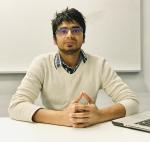
Atiqur Rahman Rasel is a 2nd year PhD candidate at the University of Technology Sydney. His main research interests include behavioural finance, market microstructure, cryptocurrencies and experimental design. Atiqur has been working as a graduate research assistant since July 2020 on different research projects.
Krisel De Dios, Faculty of Engineering and Information Technology
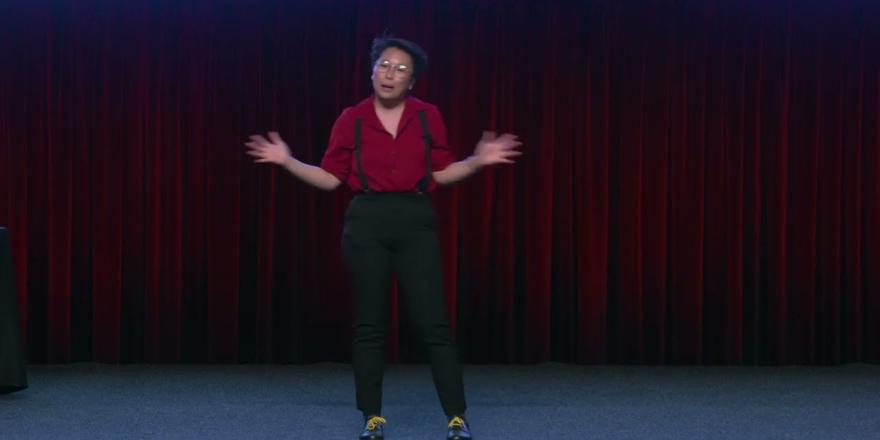
If you take a look at the photos on the right, these photos represent what ageing in a healthy way looks like where people at this age can still have a strong skeletal system.
I’m working towards this future for our community.
But, among the audience here, about 1/3 will have osteoporosis upon reaching the age of 50 years and above.
If you get osteoporosis, you will likely break your bone at your hip or spine, which can diminish your life expectancy by up to 7 years.
7 years! That’s a lot of time.
The current life expectancy is 81 years for men and 85 years for women.
I am working to improve this trend…
I am working to give you back the years osteoporosis takes from you.
First, let me explain:
The loss of bone tissue is the cause of osteoporosis. The loss of bone tissue greatly varies between you, me, and all of us… and is attributed, among other factors, to the differences in our DNA profiles. In other words, the loss of bone tissue is written in our DNA.
Because each of us has 6 billion letters of DNA, but finding which ones are related to bone loss is the big challenge we’re facing. But it’s not impossible.
Because this is where my research comes in, where I’m part of a global, collaborative study where we will scan over 20,000 people from Vietnam, the US and Australia… analysing the 6 billion DNA letters in each of them… that’s right, each! It’s a gigantic undertaking… but will allow me to find the specific DNA variations capable of predicting bone loss from birth. That’s right, from birth.
We can use the results of this large study to identify individuals who are low to high at risk of excessive bone loss… to encourage early preventative measures through simple lifestyle modifications… like diet and exercise… which are tailored to your unique DNA profile...
…enabling us to prevent fractures… and in turn, extending the overall life expectancy within the wider community.
…therefore, working towards a happy and better quality of life like these lovely couples…

Krisel De Dios is a second year PhD student in the School of Biomedical Engineering in the Faculty of Engineering and Information Technology. She is a part of Prof Tuan V Nguyen’s Osteoporosis Research group. Krisel is deeply passionate and curious about how human health and diseases are driven by genetics. For her research, she is conducting a genome-wide association study on bone loss to uncover new genetic factors related to bone loss. Subsequently, using these genetic factors to revamp current diagnostic tools for osteoporosis and employ early intervention from birth. She hopes to translate her project’s findings into individualised care and treatment of the community, contributing to the new paradigm shift of personalised medicine.
Prakash Paudel, Institute for Sustainable Futures
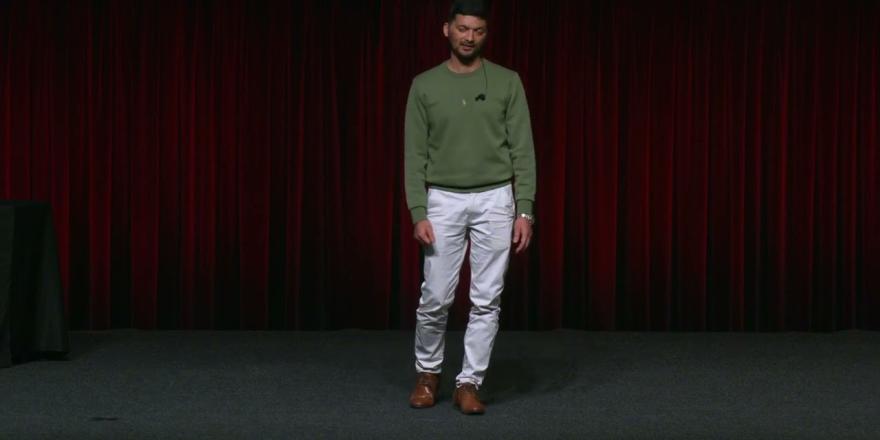
I am 25 years old, and I am in Nepal. Nepal has just signed a peace agreement with Maoist after a decade long conflict. Since people suffered for such a long time, everyone is happy, celebrating, and hopeful about the future. And no one wants to talk about conflict because people think conflict is their past not the present and not even going to be in the future. Development donors started injecting huge amount of money in the reconstruction of conflict affected societies. This all seems great, does not it? But this is not a complete picture. there is a big misconception to think post-conflict is only the presence of peace and the absence of conflict.
You may ask why this is a misconception, I would like to give example of Nepal. UK AID as a donor in the post-conflict Nepal provided fund to one of the largest NGO to support indigenous people rights and the social inclusion agenda. However, the donor later had to withdraw the funding as Key Leaders did not want to promote rights for indigenous people. As a result, it caused protest from indigenous groups in some eastern part of Nepal who saw their rights were being denied, and it ultimately triggered conflict. As in the painting the peace tree looks all nice and green from outside, but it has some sparkles in its roots which can potentially destroy the whole tree. Nepal’s case is just an example. There are more than half of the civil conflicts which are the result of post-conflict relapses, such as in Afghanistan, South Sudan, Iraq.
From these personal experiences, I started thinking how important it is for donors to be sensitive to such hidden post-conflict risks. My research explores such risks and how development can support peace rather than escalating the conflict. It examined six different donor-funded development projects as cases in post-conflict contexts of Nepal and Timor-Leste. I interviewed donors, project implementing partners, project beneficiaries, government officials and other stakeholders to know how projects are implemented.
My research found that different types of marginalised groups such as women, indigenous people are not having a voice and being involved in development decisions that affect their lives. So, they are not having benefit and equal opportunities in development. Similarly, donors have not worked with privileged groups who hold power in communities such as men and political leaders, to encourage them to be receptive to inclusion and rights for all. So there is a chance that dissatisfaction from those who are marginalised may potentially fuel future conflict.
My research has developed a conflict sensitive approach which helps donors to address the post-conflict fragilities in a holistic way. I hope my research findings will help development donors nourish the foundations and roots for the growth of long-lasting peace.

Prakash Paudel is a PhD researcher and a research assistant at the Institute for Sustainable Futures, University of Technology Sydney. His research explores the need for an Integrated Conflict Sensitivity in Development Assistance. He has a decade-long experience in teaching and research activities in the areas of positive peace, transitional justice, criminal justice, political economy, and research governance.
